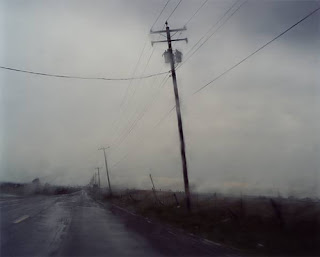 |
| Jeremy Turner, Landscape Panorama |
 |
| Jeremy Turner, Landscape Panorama |
The genre of landscape photography pertains to the representation of nature and capturing the essence of nature through a photograph. Landscape photography serves to show different spaces throughout the world. Within these spaces, strongly defined landforms, weather, and light serve to make up a landscape photograph. Not only do landscape photographs expose wilderness and nature to the public eye, they convey a strong appreciation of the world to the public.
In landscape photography, nature and scenery is the only subject of the picture. This type of photograph represents little to no human activity, and sometimes even animals can not be considered a subject in landscape photography. Usually within the photo, scenery is photographed from only one viewpoint. There are three different styles of landscape photography that are representational, impressionistic, and abstract. Landscape photography captures the beauty of nature.
 |
| Jeremy Turner, Landscape Panorama |
 |
| Jeremy Turner, Landscape Panorama |
Cited Work:
Alexander Gardner:
 |
| Alexander Gardner, 1980 |
Alexander Gardner is a Scottish photographer who was recognized for his photographs of the Civil War, Abraham Lincoln, as well as the exploration of the assignation of Lincoln. In 1860, following Lincoln's election into presidency, sparked a great war. Gardner began his photography career by photographing soldier's in their uniforms as they were leaving for the war. Gardner's popularity sparked from his self-portraits of these uniform soldiers.
 |
| Gettysburg, 1863 |
Gardner became heavily influenced by the works of Matthew Bradey after he visited the Great Exhibition in Hyde Park. After this, he began working for Matthew Bradey and he traveled throughout the country and documented the war. Gardner became an expert in portraiture photography, as well as specialized in making Imperial photographs which can be described as large prints. The outbreak of the Civil War increased the demand in Gardner's pictures and he shot battles such as Antiedem and Gettysburg.
In 1886, Garder published a two volume work that is titled Gardner's Photographic Sketchbook of the Civil War. After the Civil War he focused on photographing Native Americans, following that he gave up photography in 1871. Some art critiques criticize his work and claim that he manipulated his photographs by moving bodies and weapons to get the photographic effect that he wanted. Also, Gardner was recognized for training his young apprentice Timothy O'Sullivan.
Cited Work:
Timothy O' Sullivan:
 |
| Timothy O'Sullivan, 1871 |
Timothy O' Sullivan is an American photographer who is recognized for his photographs on the Civil War as well as Western United States. O' Sullivan like Gardner was also employed by Matthew Bradey. When photographing, O'Sullivan's picutures represented nature as a tame and industrialized land. Through his photography, he combined both science and art to capture beauty within the photograph. His photography served to attract settlers to the west.
 |
| South Side of Inscription Rock, 1873 |
In O' Sullivan's work South Side of Inscription Rock, his central focus is on a rock formation in New Mexico. With this rock formation, he also includes the desert to give a dry and arid effect on the landscape. Through this landscape photograph, he captures nature and its beauty. This photograph is very sublime in that the rock formation is on a grander scale and it is awe-inspiring. He does an excellent job at capturing the strong formation of land.
O' Sullivan created his most famous pieces of art in 1863 called "The Harvest of Death." These photographs depicted wounded and dead soldiers in the battle of Gettysburg. From this he became recognized in 1867 as the primary photographer of the Geological Exploration of the Fortieth Parallel by Clarence King. O' Sullivan died at age 42 from tuberculosis.
 |
| Ancient ruins in the Canyon de Chelle,1873 |
Cited Work:
Todd Hido:
"Hido's photographs reveal isolation and anonymity in contemporary suburbia. Eerily lit rooms and suddenly abandoned homes increase the effect of loneliness and loss." Tom E. Hinson (Cleveland Museum of Art)
Todd Hido is an American based contemporary photographer who is noted for taking photographs of urban and suburban houses. There is little to practically no information on Hido's life and career. In his photography, Hido emphasizes on light as well as high detail. Hido attended Rhode Island School of Design for college and went on to get his masters at Tufts University. He has been recognized for several solo exhibitions as well as group exhibitions. In several of his photographs, he focuses on subjecting nudes such in his exhibition titled Househunting Nudes in Germany.
 |
| Untitled |
 |
| Untitled |
Hido now resides in Northern California.
Cited Work:
Video
Information
Images
Edward Burtynsky:
 |
| Edward Burtynsky |
 |
| Silver Lake Operations #3, 2007 |
 |
| Silver Lake Operations #1, 2007 |
Burtynsky is recognized for many accomplishments including: the TED prize, the Outreach award at the Rencontres d’Arles, The Flying Elephant Fellowship, Applied Arts Magazine book award(s), and the Roloff Beny Book award. In 2006 he was awarded the title of Officer of the Order of Canada and given an honorary degree; Doctor of Laws, from Queen’s University, Kingston, Ontario, Canada.
Cited Work:
Florian Maier- Aichen:
 |
| Self- Portrait |
 |
| Untitled, 2005 |
 |
| Untitled, 2002 |















.jpg)


















